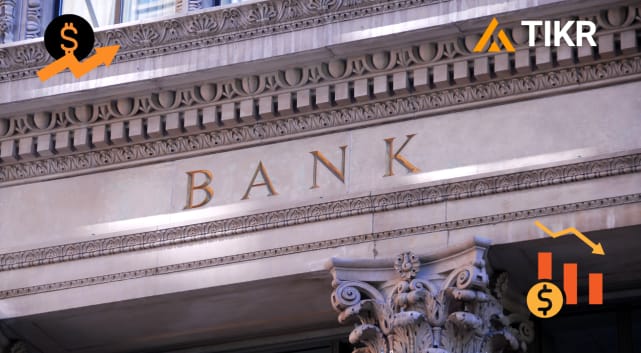CME Group (NASDAQ: CME) has been a steady performer in recent years. Trading activity across interest rate futures, FX, and commodities has stayed strong, while the company’s efficient clearing model continues to support some of the highest margins in the industry. The stock trades near $278/share, up over the past year as elevated rate volatility boosts hedging demand.
Recently, CME announced two key developments that stood out to investors. The company expanded its suite of SOFR linked futures and options, reinforcing its leadership as markets continue to transition away from older rate benchmarks. CME also delivered another quarter of strong operating performance, with high margins and healthy activity across major product lines. These moves highlight the company’s ability to adapt to shifting market conditions while maintaining its leading position in global derivatives.
This article explores where Wall Street analysts think CME could trade by 2027. We have pulled together consensus targets and valuation models to outline the stock’s potential path. These figures reflect current analyst expectations and are not TIKR’s own predictions.
Find out what a stock’s really worth in under 60 seconds with TIKR’s new Valuation Model (It’s free) >>>
Analyst Price Targets Suggest Limited Upside
CME trades around $278/share today. The average analyst price target is $284/share, which implies roughly 2% upside. The spread is tight, suggesting analysts broadly agree on where the stock should trade:
- High estimate: ~$314/share
- Low estimate: ~$201/share
- Median target: ~$284/share
- Ratings: 4 Buys, 3 Outperforms, 7 Holds, 2 Underperforms, 1 Sell
Since the average target sits only slightly above the current price, analysts appear to view CME as fairly valued. For investors, this suggests the stock’s stability is already priced in, and larger gains may require a pickup in volatility or a stronger surge in futures trading volumes.

Discover how much upside your favorite stocks could have using TIKR’s new Valuation Model (It’s free) >>>
CME: Growth Outlook and Valuation
CME’s financial profile remains one of the strongest among global exchanges:
- Revenue is expected to grow about 5% annually through 2027
- Operating margins remain near 69%
- Shares trade at roughly 25× forward earnings
- Based on analysts’ average estimates, TIKR’s Guided Valuation Model using a 22.5× forward P E suggests ~$316/share by 2027
- That implies about 13.5% total return, or roughly 6% annualized
For investors, these figures point to a steady compounder. CME delivers predictable earnings due to its diversified futures ecosystem and highly scalable clearing infrastructure. The valuation is premium, but it reflects the consistency of CME’s cash flow and its position as a critical operator in global derivatives markets.

See a stock’s true value in under 60 seconds (Free with TIKR) >>>
What’s Driving the Optimism?
CME benefits from persistent demand for risk management as institutions navigate shifting interest rates, currency moves, and global macro uncertainty. Its broad product lineup ensures that activity in one asset class often offsets slowness in another, helping the company maintain steady revenue.
The company is also deepening product adoption and expanding electronic trading capabilities. New rate products, growing options activity, and upgrades to trading infrastructure all enhance customer engagement. This strengthens CME’s moat and positions the company to benefit from long term growth in institutional hedging demand.
For investors, these strengths support the view that CME can continue delivering stable earnings growth even without rapid market expansion.
Bear Case: Slower Growth and Premium Valuation
Even with its strong model, CME is not a fast grower. With revenue rising around mid single digits, the stock may struggle to command a higher valuation multiple from here. Since it already trades at about 25× forward earnings, investors may hesitate to pay more without a meaningful shift in trading activity.
The biggest near term risk is a prolonged period of low volatility, particularly in interest rate markets. If hedging needs decline, futures volumes could soften, leading to slower earnings growth than expected.
For investors, the concern is that CME’s premium valuation limits upside if volume trends weaken or markets remain unusually calm.
Outlook for 2027: What Could CME Be Worth?
Based on analysts’ average estimates, TIKR’s Guided Valuation Model suggests CME could trade near $316/share by 2027. From today’s price of about $278/share, that implies roughly 13.5% upside, or close to 6% annualized returns.
The forecast points to a company built for predictability rather than rapid appreciation. The expected return assumes stable activity, resilient margins, and continued leadership in derivatives. To achieve stronger gains, CME would likely need higher volatility, accelerated trading volumes, or faster adoption of new products.
For investors, CME stands out as a high quality, long term compounder. The upside may not be dramatic, but the path to returns is steady, repeatable, and supported by one of the most durable business models in global finance.
AI Compounders With Massive Upside That Wall Street Is Overlooking
Everyone wants to cash in on AI. But while the crowd chases the obvious names benefiting from AI like NVIDIA, AMD, or Taiwan Semiconductor, the real opportunity may lie on the AI application layer where a handful of compounders are quietly embedding AI into products people already use every day.
TIKR just released a new free report on 5 undervalued compounders that analysts believe could deliver years of outperformance as AI adoption accelerates.
Inside the report, you’ll find:
- Businesses already turning AI into revenue and earnings growth
- Stocks trading below fair value despite strong analyst forecasts
- Unique picks most investors haven’t even considered
If you want to catch the next wave of AI winners, this report is a must-read.
Find out what your favorite stocks are really worth (Free with TIKR) >>>








